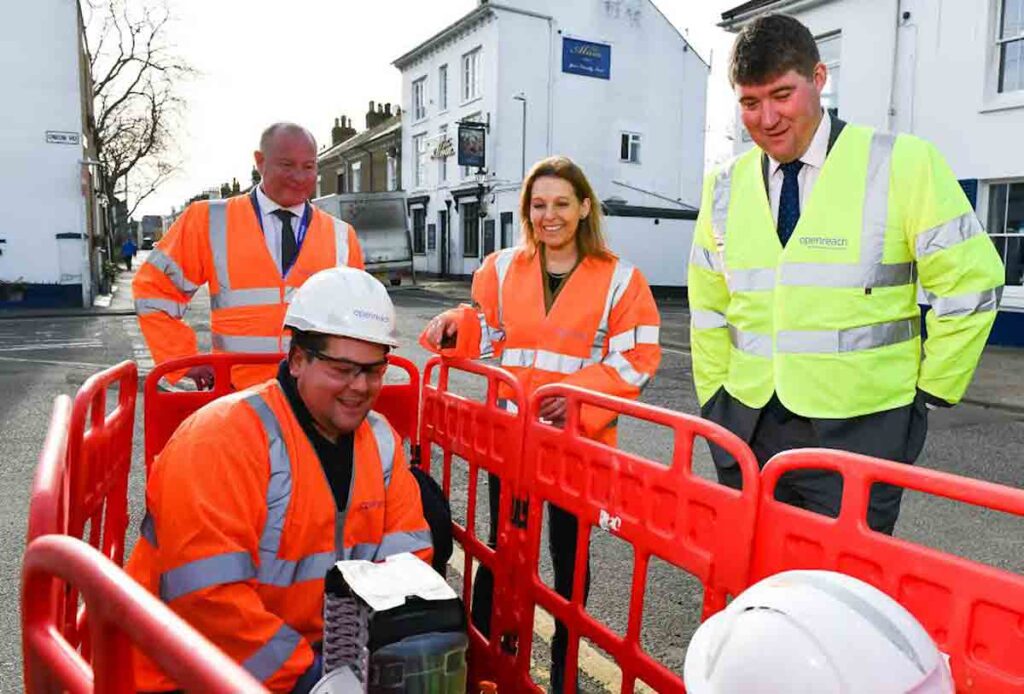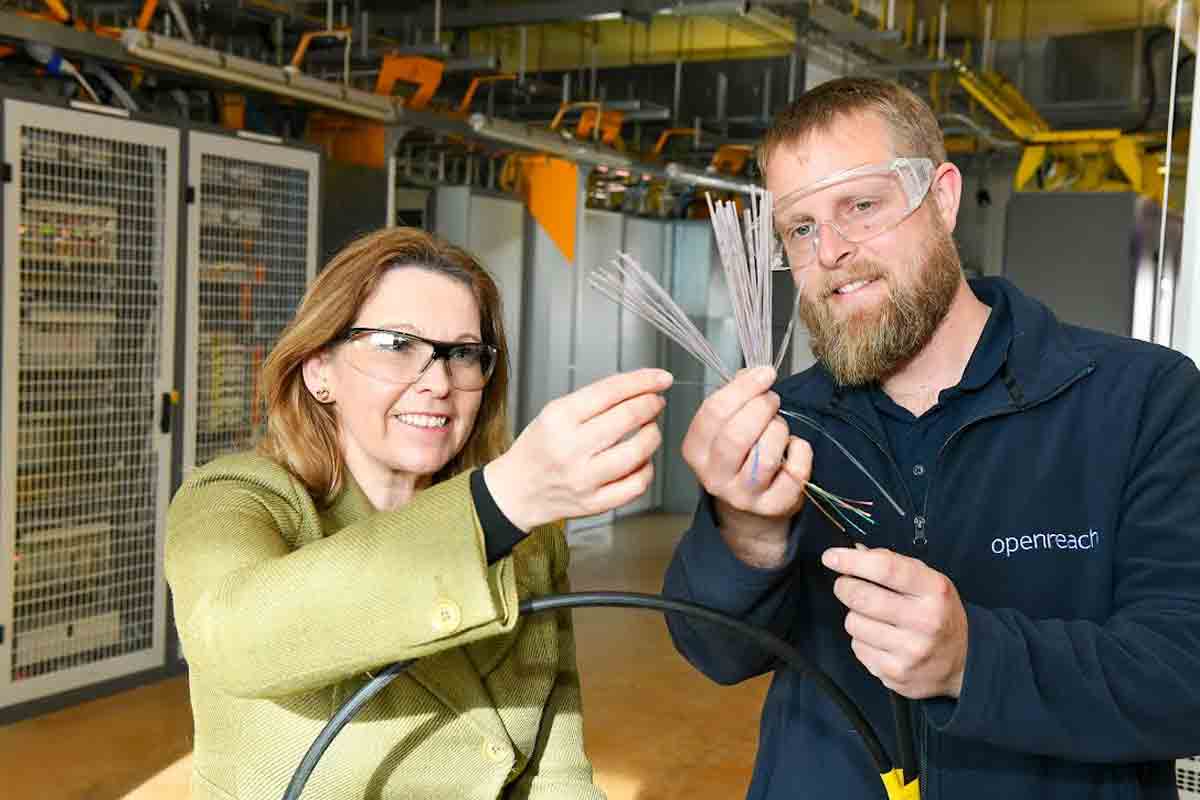Single strand of fibre can provide enough capacity to serve up to 32 individual properties
MP for Dover and Deal, Natalie Elphicke OBE, has visited Openreach engineers who are building a new, ultrafast Full Fibre broadband network to thousands of homes and businesses in her constituency.
More than 75% of homes and businesses in the town can now access Full Fibre through a provider of their choice using the Openreach network.

Mrs Elphicke had a tour of the exchange, then went out into the streets to see how engineers are bringing the new technology to the area. This is part of Openreach’s £15 billion commercial investment to upgrade 25 million homes and businesses across the UK.
Ten fantastic full fibre facts:
- Connecting everyone in the South East to Full Fibre broadband by 2025 could create a £8.7 billion boost to the region’s economy and bring more than 64,000 new workers into the workforce.
- Fibre optics are strands of glass around one tenth the thickness of a human hair. They transmit data using light signals.
- A single strand of fibre can provide enough capacity to serve up to 32 individual properties with Gigabit speeds
- Pure fibre optic broadband can run at speeds of 1 gigabit per second (1000Mbps) – that’s 10 times faster than today’s UK average broadband speed. You can download a two-hour HD film in less time than it takes to make a cup of tea. And video gamers could download a 5-gigabyte virtual reality (VR) game in 1.7 minutes, instead of waiting half an hour.
- Full fibre is more reliable than traditional copper connections. A full fibre broadband signal isn’t affected by external interference whereas copper can be impacted by outside electrical signals – including electric fences and even bad weather!
- A fibre optic cable can send a signal over 120 miles without any real loss of quality. Traditional copper cables can lose signal at around one mile.
- A family of four can all stream ultra HD or 4k quality video simultaneously, without waiting or buffering.
- Full fibre is better for the environment – the amount of electricity used to power fibre is significantly less than needed for copper cables. Better connectivity also enables more people to work from home – which cuts down on commuting. 8. Research suggests fibering up the whole of the UK could save 300 million commuting trips – reducing carbon emissions by 360,000 tonnes.
- Full fibre can boost business productivity. It enables cheaper broadband powered phone services, and better access to cloud-based computing services. For example, full fibre connectivity combined with cloud computing means businesses can upload, store, access and download vast amounts of data in minutes instead of hours. Data is backed up and securely archived off-site so not relying on costly, ageing servers taking up expensive office space.
- Full fibre broadband will be crucial in supporting plans to give NHS patients access to ‘virtual clinics’ where patients who don’t physically need to come hospital can get a video consultation with their doctor. It can also allow hospitals to share HD quality graphics of medical scans in seconds to improve diagnosis speeds. For example, medical staff can download a 2 gigabyte CT scan in 40 seconds, instead of 14 minutes.
